Rupee needs to weaken as exports at risk, says RBI adviser
Our Correspondent : 22 April 2015

Mumbai: The Reserve Bank of India would probably favor a further retreat in the rupee, Asia’s worst-performing currency of the past week, to combat a slump in exports, an adviser to the monetary authority said.
“The rupee has appreciated in real terms and needs to weaken to 64 or maybe 65” a dollar this year, according to Ashima Goyal, a member of the central bank’s technical advisory panel that makes policy recommendations to governor Raghuram Rajan. “Current capital inflows are excessive” and that’s fueling appreciation, she said. While the rupee lost 2.3% against the greenback to 62.74 in the past six months, it advanced against 13 of 16 major currencies.
Global funds have pumped $13 billion into local stocks and bonds in 2015 after buying a record $42 billion last year. An RBI gauge of the rupee’s strength against the currencies of its six largest trading partners climbed to the highest since at least 2003 in March, indicating a 25% overvaluation. That’s despite net dollar purchases of about $20 billion by the central bank in the spot market in January and February.
“There is a limit to how much the RBI can intervene if there are a lot of inflows,” Goyal said from Mumbai. “It’s a good thing for us that the rupee depreciates a little as it’s getting overvalued.”
Governor Rajan said on 7 April the rupee’s relative strength is pressuring margins of some exporters. India’s overseas sales slumped 21% in March from a year earlier in the biggest drop since 2009, resulting in the trade deficit widening to a four-month high of $11.8 billion, data showed on Friday
The rupee has strengthened about 15% against the euro in the past six months, while gaining about 9% versus the Japanese yen, data compiled by Bloomberg show. In the past week, it fell 0.6% against the dollar as emerging- market currencies advanced across the rest of Asia.
Improved outlook
Overseas funds flocked to Indian assets as Prime Minister Narendra Modi’s government, which came to power in May, took steps to allow higher foreign investment in certain industries, cut red tape and boost spending on infrastructure. The outlook for the $1.9 trillion economy improved also as the plunge in Brent crude prices helped slow inflation and repair public finances. India imports about 80% of its oil.
The credit-rating outlook for Asia’s third-largest economy was raised to positive by Moody’s Investors Service this month and Fitch Ratings boosted its growth forecast. Gross domestic product (GDP) will increase 7.5% in 2015, surpassing China’s rate of expansion for the first time since 1999, the International Monetary Fund (IMF) predicts.
“We’re seeing a bulge in capital flows since last year because other emerging nations are not doing that well,” Goyal said, adding that India will be vulnerable to outflows once the Federal Reserve starts raising interest rates.
Reserve ammunition
The Indian currency plummeted to a record 68.845 a dollar in August 2013 after the Fed’s signal that it would withdraw monetary stimulus triggered an exodus of funds from emerging markets.
“There would be some pressure on the rupee but it’s not going to be sharp because the RBI has so much ammunition in reserves and the India story is so good compared to other countries,” said Goyal, who teaches at the Mumbai-based Indira Gandhi Institute of Development Research.
India’s foreign-exchange reserves swelled to a record $343 billion this month. RBI governor Rajan refrained from cutting the benchmark repurchase rate at a policy review on 7 April after reducing it in unscheduled moves in January and March to 7.5% as retail inflation slowed.
Consumer prices increased 5.2% from a year earlier in March, the smallest gain in three months, data showed last week. Goyal said the RBI has scope to lower interest rates by another 50 basis points in 2015, adding that she expects inflation to be around 5.5% by the end of the year.
HCL Tech shares tank nearly 10% as Q3 earnings disappoint
Our Correspondent : 21 April 2015
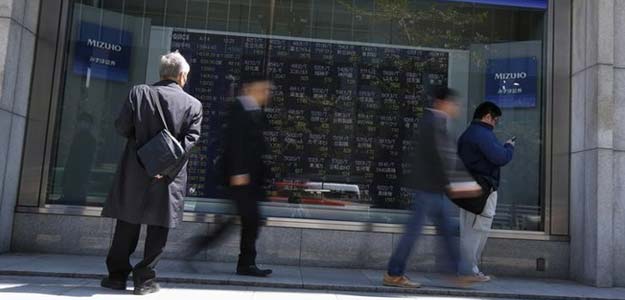
Shares of HCL Technologies fell sharply by nearly 10 per cent today as company's March quarter earnings came in below market expectations.
The stock plunged 9.64 per cent to Rs 834.10 on the BSE.
On the NSE, it slipped 9.65 per cent to Rs 835.10.
Later, the stock was trading at Rs 885, down 4.13 per cent on the BSE.
"HCL Technologies announced its Q3 FY'15 results below expectations," said Sarabjit Kour Nangra, VP Research - IT, Angel Broking.
HCL Technologies today reported a 3.6 per cent increase in net profit at Rs 1,683 crore for the quarter ended March 31, 2015.
The company had posted a net profit of Rs 1,624 crore in the corresponding quarter last fiscal, HCL Technologies said in a statement.
The company follows July-June fiscal.
Its revenue for the reported quarter was up 11 per cent at Rs 9,267 crore from Rs 8,349 crore in the corresponding period a year ago.
However, on sequential basis, the net profit declined by 12.2 per cent from Rs 1,915 crore in Q2 FY2014-15 and revenue fell by a marginal 0.2 per cent from Rs 9,283 crore in Q2FY15.
In dollar terms, company's net profit grew 2.3 per cent to $270 million, while revenue rose 9.5 per cent to $1.49 billion in Q3 of FY15 from the year-ago period.
Fitch says property market revival to help developers
Our Correspondent : 20 April 2015
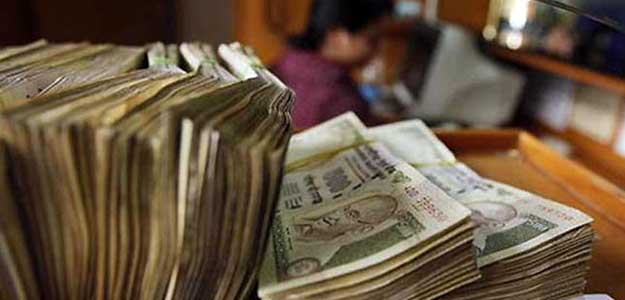
Global rating agency Fitch today said the likely upturn in the country's investment climate and reduction in interest rates will improve the property market by the end of March 2016 and provide relief to the debt-ridden developers.
"The property development sector (will) be a key beneficiary of reductions in housing loan interest rates by several domestic banks in April 2015," the agency said, adding that they would also boost credit growth.
Besides, the Reserve Bank has reduced the key policy rate by 0.50% since January, prompting commercial banks to cut interest rates for home loan and other borrowers.
"We expect property developers with a greater exposure to the middle and lower income segments to benefit more from lower domestic interest rates," it said, adding that developers with a greater mix of high-income customers, such as Lodha Developers and Indiabulls, will be less impacted because their customers are less sensitive to market interest rates.
Both the companies, it said, would meaningfully reduce the portion of debts by end-2016.
The rating agency observed that "the process of reducing leverage (debts) stalled in 2014 due to weak sales and slower cash collections on properties that were sold towards the end of 2014 and in early 2015, as developers introduced easy payment schemes to stoke demand."
Earlier in the month, Fitch raised its forecasts for India's GDP growth to 8% for the current fiscal, up from 7.4% in 2014-15, and 8.3% for 2016-17.
Domestic property purchases remained weak in 2014 due to high interest rates and some political and policy uncertainty in an election year, it said, adding that several buyers postponed their purchases, which drove up inventory levels steadily during the last 12 months.
Most developers, Fitch said, responded by introducing easy payment plans for certain products. These payment plans typically require 20% of the property price to be paid upfront and the remainder at the end of construction, usually several years later. This has lengthened cash collection cycles and contributed to higher leverage.
Fitch estimates that around 20% of the sector's sales over the last two fiscal quarters were financed by easy payment plans and observed "the longer cash collection cycle will continue to weigh on developers' balance sheets in the near term."
India's ability to absorb economic shocks is stronger: Jaitley
Our Correspondent : 18 April 2015

With the vast depth and size of its market, India's ability to absorb international shocks is far stronger as reflected in the rupee remaining relatively stable, Finance Minister Arun Jaitley has said.
"International factors obviously have an impact. Considering the vast depth and size of the Indian market...Our ability to absorb those shocks is far stronger," Jaitley said when asked about the level of risk from the external environment given that the US Federal Reserve is poised to start raising rates this year.
"Even in the past, when international trends have been far more volatile, our dependence on our own domestic markets has made us relatively more stable than ever, and I won't call it threats or risks -- if we continue with our own internal ability to carry on with our own reform process, is our strength," he said.
"As long as we continue that, our ability to absorb various international possible scenarios would be reasonably high," Jaitley said in response to the question at the Peterson Institute for International Economics.
Jaitley said by and large, the strength of the Indian economy is also reflected in the fact that the rupee has remained relatively most within the stable range.
"We do believe that the rupee will find its real value, or real strength in the international currency market, even when several currencies did face a serious challenge recently," he said.
"It's been relatively more stable, even relationship with the dollar, with regard to most other currencies, it has strengthened in comparison," he added.
Talking about disinvestment, Jaitley said in terms of quantum of disinvestment public privatisation, the current government is way ahead of any government in the past.
"In the year just concluded, my disinvestment target is the largest ever divestment in Indian history, and this year is going to be much more, if not twice as much as the last year," Jaitley said in response to a question.
"Therefor, certainly strategic disinvestment in some cases is a part of my agenda," he said.
"Which are the companies I choose for it, we make this decision known at a later stage, but in terms of quantum of disinvestment public privatisation, we are way ahead of any government in the past," Jaitley said.
'Foreign investors should go to courts against tax demand'
Our Correspondent : 17 April 2015
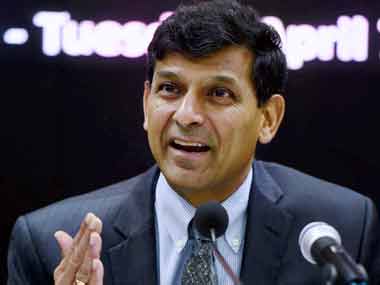
Finance Minister Arun Jaitley, who had previously stated that India was not a tax haven and legitimate dues from foreign investors will be pursued, had earlier this week said that "the amount involved is Rs 40,000 crore."
Refusing to relent on a Rs 40,000 crore tax demand on foreign portfolio investors, the government today said FIIs should look at courts to appeal against the tax rather than seek retrospective waiver.
Revenue Secretary Shaktikanta Das in an interview to PTI said FIIs had lost an appeal at the Authority for Advance Ruling (AAR) against levy of 20 per cent Minimum Alternate tax (MAT) on capital gains they made in years through March 31.
"If you are not satisfied with a particular judicial pronouncement, the answer is to go and appeal to a next higher judicial forum," he said.
Asked whether FIIs can be provided any relief after a ruling by AAR, Das said: "The answer is not in between rushing to the government and expecting the government to intervene through executive action or initiating a legislative measure to provide retrospective exemption".
Das, however, refused to comment on the total tax demand raised on FIIs or the number of foreign investors involved.
Finance Minister Arun Jaitley, who had previously stated that India was not a tax haven and legitimate dues from foreign investors will be pursued, had earlier this week said that "the amount involved is Rs 40,000 crore."
Yesterday in Washington, Jaitley said: "It may not be possible for any government after a court verdict, which is a transient court verdict, which is still subject to appeals, to intervene in those particular matters."
Das said the Foreign Institutional Investors (FIIs) had approached the government with certain problems before the Budget and hence they have been exempted from paying MAT on capital gains from the current fiscal, he said.
"The FIIs approached the government with certain difficulty in paying MAT. Considering that difficulty government provided the exemption. And naturally the exemption has to be given prospectively. And government has done it... So their future business is fully secured and is not affected by the issue of MAT," he said.
Stressing that the government would not bring in any retrospective changes to tax laws, Das said: "The government has time and again said that this government is not for retrospectivity in matters of taxation, it applies to new levies, it also applies to issues relating to exemptions."
PSU OMCs drop after jump in crude oil prices
Our Correspondent : 16 April 2015
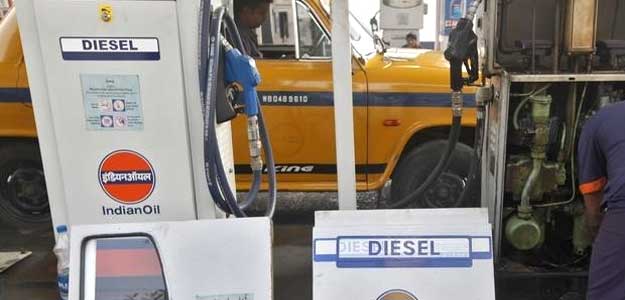
Shares of three public sector oil marketing companies fell by 0.75% to 2.12% at 10:42 IST on BSE as crude oil prices firm up.
HPCL (down 2.12%), Indian Oil Corporation (down 1.27%) and BPCL (down 0.75%), edged lower.
Meanwhile, the S&P BSE Sensex was down 118.78 points, or 0.41%, at 28,680.91.
Brent crude oil futures edged lower after hitting 2015 highs above $63 per barrel yesterday, 15 April 2015, after US inventories built up more slowly than expected and talks between major oil producers this week triggered speculation of production cuts.
Brent for June settlement was off 30 cents at $63.02 a barrel. The contract had surged $3.51 a barrel or 5.86% to settle at $63.32 a barrel during previous trading session.
Higher crude oil prices could increase under-recoveries of public sector oil marketing companies (PSU OMCs) on domestic sale of LPG and kerosene at controlled prices. The government has already freed pricing of petrol and diesel.
Meanwhile, PSU OMCs announced a reduction in retail selling price of petrol and diesel after trading hours yesterday, 15 April 2015. Indian Oil Corporation announced a reduction in retail selling price of petrol by 80 paise per litre at Delhi (including state levies) with corresponding price revision in other states. With this change, the price of petrol in Delhi will become Rs 59.20 per litre.
IOCL has announced a reduction in retail selling price of diesel by Rs 1.30 per litre at Delhi (including state levies) with corresponding price revision in other states.
With this change, the price of diesel in Delhi will become Rs 47.20 litre. The reduction in petrol and diesel prices became effective from the midnight of 15/16 April 2015.
Since the last reduction in petrol and diesel prices on 2 April 2015, the trend of international prices of petrol and diesel and the rupee-dollar exchange rate warrant a further downward revision in prices, the impact of which is being passed on to the consumers with this price decrease, IOCL said.
The movement of prices in international oil market and the rupee-dollar exchange rate shall continue to be closely monitored and developing trends of the market will be reflected in future price changes, IOCL said.
Arun Jaitley Justifies Rs 40,000 Crore Tax Demand on FIIs
Our Correspondent : 15 April 2015
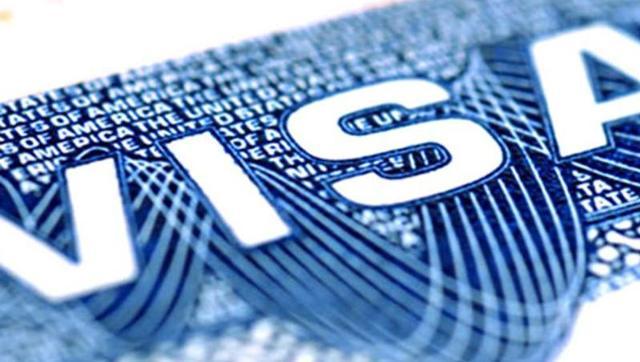
Finance Minister Arun Jaitley on Tuesday said the government will press ahead with Rs 40,000 crore tax demands on foreign institutional investors (FII) for capital gains made during previous years.
The finance minister told NDTV that the tax demand was made in accordance with a law brought by the previous government and upheld by a tribunal.
"FIIs went to a tribunal, which is called Authority for Advance Rulings (against levy of 20 per cent Minimum Alternate Tax on capital gains). They got a judgement against themselves... So, the tribunal has decided against them," Mr Jaitley said.
Mr Jaitley in this year's Budget abolished the rule under which FIIs were taxed. However, waiver on paying tax on capital gains will apply from April 1, 2015; it will have no bearing to the Rs 40,000 crore in prior tax demand raised by the government, Mr Jaitely added.
"We are reasonable, so for the future I have waived it. But the tax demand after winning the case, if I waive off, we will be like a tax haven ....how would be I answerable to Parliament that after the case I just waive Rs 40,000 crore," he said.
On multi-billion dollar tax demands on Cairn Energy Plc of UK and Cairn India, Mr Jaitley said the tax assessment orders were passed in January 2014.
"Since they are entitled to challenge (notices) in court, we will see what the courts decide," he said.
Mr Jaitley reminded investors that in the last one year no retrospective tax law has been brought and not a single new notice has been issued.
"My only problem is with regards to legacy issues that I inherited from the previous government," he said.
World Bank: Indian migrants remitted $70 billion last year, tops chart again
Our Correspondent : 14 April 2015
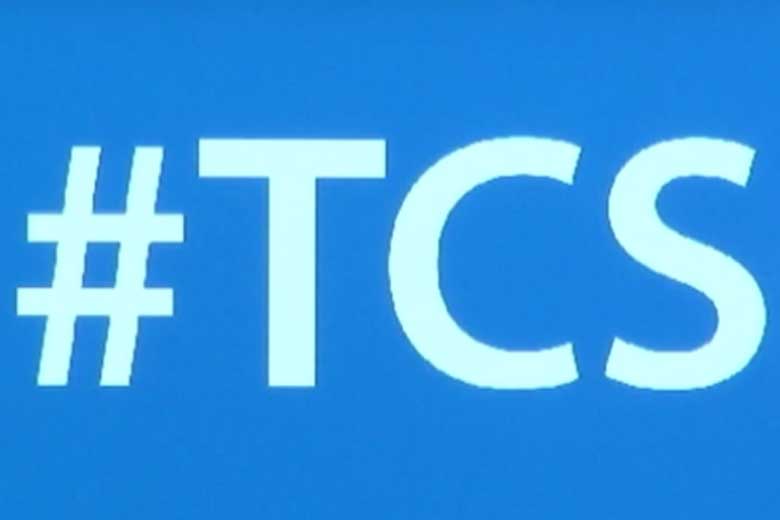
The World Bank has said India continues to be the leading nation in remittances pulling in $70 billion from its global migrant workforce in 2014.
World Bank's study of remittance, the money workers and professionals working in foreign lands send back to their native countries, attributed this mainly to weak economic growth in Europe, deterioration of the Russian economy and the depreciation of the euro and ruble.
Remittances to the developing world are expected to reach $440 billion in 2015, an increase of 0.9% over the previous year. Global remittances, including those to high income countries, are projected to grow by 0.4% to $586 billion.
United States, Saudi Arabia, Germany, Russia and the United Arab Emirates (UAE) remained the top five migrant destination countries and apart from India, China, Philippines, Mexico and Nigeria are the top five remittance recipient countries, in terms of value of remittances, the report said.
"Total remittances in 2014 reached $583 billion. This is more than double the ODA in the world. India received $70 billion, China $64 billion, the Philippines $28 billion. With new thinking these mega flows can be leveraged to finance development and infrastructure projects," said Kaushik Basu, World Bank Chief Economist and Senior Vice President.
"Israel and India have shown how macro liquidity crises can be managed by tapping into the wealth of diaspora communities. Mexican migrants have boosted the construction sector. Tajikistan manages to nearly double its consumption by using remittance money. Migrants and remittances are clearly major players in today's global economy," Basu said.
In line with the expected global economic recovery next year, the global flows of remittances are expected to accelerate by 4.1% in 2016, to reach an estimated $610 billion, rising to $636 billion in 2017.
Remittance flows to developing countries are expected to recover in 2016 to reach $459 billion, rising to $479 billion in 2017, the World Bank said.
The global average cost of sending $200 held steady at 8% of the value of the transaction, as of the last quarter of 2014.
Despite its potential to lower costs, the use of mobile technology in cross-border transactions remains limited, due to the regulatory burden related to combating money laundering and terrorism financing, the report said.
International remittances sent via mobile technology accounted for less than two percent of remittance flows in 2013, according to the latest available data.
In addition to sending money to their families, international migrants hold significant savings in their destination countries. 'Diaspora savings' attributed to migrants from developing countries were estimated at $497 billion in 2013, the latest data available.
"The moderation in the growth of remittances will be hard on many poor people. The affected countries may have to consider creative ways of smoothing the shock. Fortunately, migration and remittances can be leveraged forinnovative financing," said Dilip Ratha, Lead Economist, Migration and Remittances, at the World Bank's Development Prospects Group and Head of the Global Knowledge Partnership on Migration and Development (KNOMAD).
"As to long-term financing needs for the Post-2015 Development Goals, I would love to see a bullet train system in India, an international airport in Nigeria, another Suez Canal in Egypt, a hydro-project in Pakistan, a community development program in the Philippines, all financed by mobilising the power of remittances and diaspora savings," Ratha said.
PM Modi's vows welcoming environment, stable tax regime as he invites Germany to Make in India
Our Correspondent : 11 April 2015
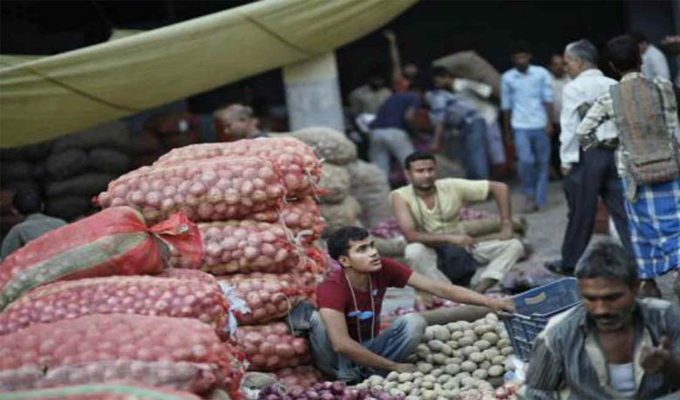
Hannover: Wooing investors from Germany and the rest of the world, Prime Minister Narendra Modi tonight promised a welcoming business environment in India with a "predictable, stable and competitive" tax regime and asserted that the "remaining uncertainties" will be addressed.
He said the task of turning around the systems in India is "huge" and will not be completed overnight but stressed that the government is firmly moving in that direction and it will be done.
Inaugurating, along with German Chancellor Angela Merkel, the Hannover Fair in which India is a partner country, Modi said his government is "removing unnecessary regulations and simplifying our procedures" to make it easy for doing business in the country and enable foreign companies to participate in the 'Make in India' programme.
"Today, I come to seek German partnership in my own mission to open up India's seamless economic potential. To the industry of the world that has assembled here today, I say that we have no special bias for our host today! India is open and ready to embrace the world," he said addressing the gathering of top business leaders from Germany and other parts of the world.
Citing his travels around the world, Modi said he has seen "a new level of interest" in building partnerships of trade, investment and innovation in India.
"It mirrors the surge of hope in our own people and industry; the new tide of expectation in our 800 million youth -- for opportunities and progress. And, if we want to fulfil the dreams of our youth, we must turn our industry into a manufacturing hub for the world and an engine for employment at home. And, we must equip our youth with the skills to meet the needs of our nation and the demands of the globalised world," he said.
Inviting investments and technology, the Prime Minister said, "We are using digital technology to eliminate multiple approvals and endless wait. We will guide you and walk with you in your projects. We have set up 'Invest India' and country desks in it that will be networked to the states. We
will nurture innovation and protect your intellectual property."
"There were institutions in India that seemed beyond scrutiny. Well, they no longer are. We are reforming institutions in ways that has not happened in decades. We are building a tax regime that is predictable, stable and competitive. We will now address the remaining uncertainties. The Goods and Services Tax is a long needed revolution that is becoming a reality," Modi said.
"My message to you (foreign investors) is this: You will find environment that is not only open, but also welcoming. We will make it easy to do business in India. And, we will always be eager to listen to your feedback," the Prime Minister said.
Merkel, who led her country out of economic recession, responded by saying that she wanted not only Germany companies to participate in 'Make-in-India' but also 'Make-in-Germany' in which Indian companies could participate.
With regard to Modi's assertion about improving conditions for business in India, she said the two countries will have inter-governmental talks later this year when "stock" can be taken of whether the "problems" have been addressed.
"India and Germany need to change ways of doing business," the Chancellor said.
She said the good volume of trade of 16 billion euros is a "good point" to start.
Observing that France, from where Modi came, was also keen to do business with India, Merkel told the German business leaders, "I know you have competition but more the competition, better you get."
Modi earlier said, "For us, the highest priority is creating world class infrastructure. We have made a sharp increase in public investments. We have established a National Infrastructure and Investment Fund and a new institution for integrated development of this sector."
"We are launching attractive new financial instruments for long term funds. We seek to fuel our growth with the cleanest and most efficient use of energy," Modi said.
He said his government has set a target of 75 Giga Watts of new capacity for renewable and clean energy in the next seven years.
"It is a challenging goal -- yes; but, important to pursue," the Prime Minister said.
Talking about good governance, he said, it is essential "not just for our citizens, but also for business."
Giving an overview of what his government is doing, Modi said, "With transparency and speed, we have resumed long stalled projects and allocation of resources. This is adding new momentum to our economy. We are instituting a rational framework for acquisition of land without causing distress to farmers and other landowners. We are creating a predictable and transparent environment approval process that will protect our natural heritage."
He also highlighted his efforts for cooperative federalism to achieve developmental goals.
"The investment journey may begin in Delhi, but its success depends on state capitals and districts," he said.
"For the first time, we are working as Team India –- a new partnership between the Centre and the States. We speak of cooperative federalism, but also of competitive federalism, where states would excel by competing with each other for investments and jobs. We are also giving them more resources,
so that they can build the infrastructure that you need. I also see them as partners in our international engagement," Modi said.
"But, I am also aware that it is easier to change policies and write new laws than it is to change attitudes, culture and systems. Every CEO who has tried a turnaround knows that. Our task is huge; it won't be completed overnight.
But, I am confident that it will. And, we are moving firmly and clearly in that direction," he said.
IT minister Ravi Shankar Prasad requests Apple to set up R&D facility in India
Our Correspondent : 11 April 2015
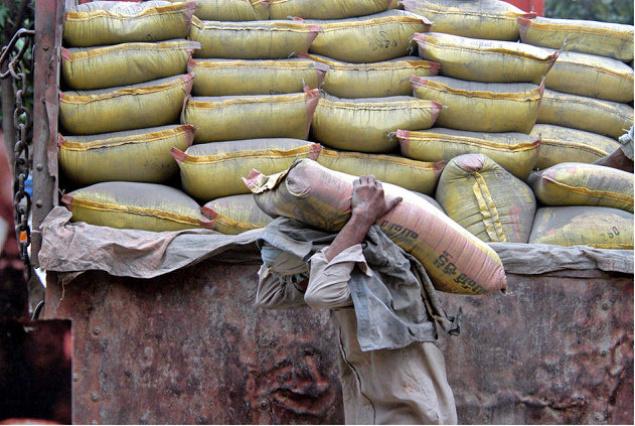
Communications and IT Minister Ravi Shankar Prasad asked tech giant Apple to consider opening an R&D facility in India as the country offers great business opportunities.
The Minister, who met Apple Head Compliance EMEIA region John Reynolds, said though the US firm did not have a powerful presence in the country, it sold products worth USD 730 million here in 2013-14 fiscal.
"Apple is a very effective brand in India and personally I requested them to consider opening a good R&D centre in India," Prasad said after the meeting.
He said a R&D centre in the country would help the tech-giant in getting good business propositions in other parts of Asia as well.
Describing the meeting as positive, Prasad said he would visit Apple's facility in Silicon Valley next month during his trip to USA for a Nasscom event.
"I was very happy to learn that though Apple do not have a very powerful presence yet, in the financial year 2013-14 they sold their products worth USD 730 million in India. I am sure with 2014-15, it must have crossed more...From my side I welcome them to explore India in a big way," Prasad added.
Reynolds said during the meeting he got some fascinating information about the country.
Sources though said the Apple has been given an assurance that in case they want to set up a manufacturing facility in the country, apart from the incentive schemes announced by the Centre, the state governments may also give additional incentives.
"It was conveyed to him that in the event they propose to expand their operations here including manufacturing then enough encouraging response will come not only from Centre by all its incentive schemes but the state governments may vie with each other to give further incentives in lieu of the big brand of Apple," sources said.
Apple is planing to grow its business in India, one of the world's fastest growing market for smart devices, and the company is re-looking at its distribution landscape and redefining its customer segments.
According to CyberMedia Research, the iPhone maker has emerged as the largest 4G LTE device vendor in India with a market share of 45 per cent in October-December 2014.
The research firm said over a million LTE devices -- including smartphones, tablets and data cards -- were shipped to the Indian market in the fourth quarter of 2014, marking the "coming of age" of the 4G devices.
Company's latest large-screen iPhone 6 and 6 Plus are also among the top sold premium handsets in India.
IndusInd Bank agrees to buy jewellery financing biz from RBS
Our Correspondent : 10 April 2015
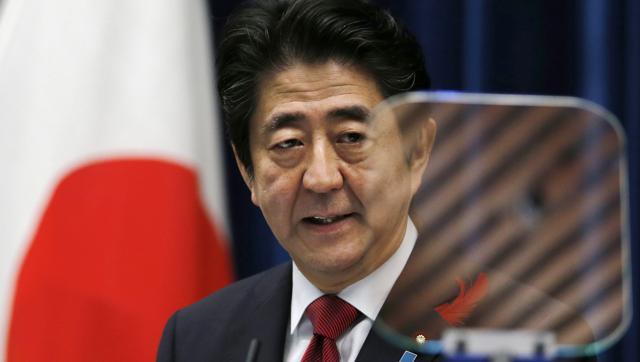
Hinduja Group-promoted IndusInd Bank has agreed to buy Royal Bank of Scotland's diamond and jewellery financing business in the country for an undisclosed sum.
The loan book of RBS in diamond and jewellery financing segment is about Rs 4,500 crore and also includes clients of ABN Amro Bank. Accordingly, IndusInd has also simultaneously entered into an agreement with ABN Amro, which is one of the oldest banks in this business, IndusInd Bank said in a statement.
The city-based bank said the deal is subject to regulatory approvals.
If the deal gets regulatory approval, all the employees within the division and clients would move to IndusInd Bank.
IndusInd Bank is already into diamond and jewellery financing business and this acquisition will enhance its position in the segment.
On the long-term partnership agreement with ABN Amro, IndusInd said this strategic relationship will facilitate deeper industry and client insights and in turn lead to improved client servicing, enhanced revenue opportunities and better risk management.
"This proposed acquisition fits nicely into our strategy of creating scale with profitability in select business segments. The partnership with ABN Amro Bank will be an important pillar for both organisations to stay deeply engaged with customers in the industry globally," IndusInd Bank head Romesh Sobti said.
RBS has been trying to exit its operations in India since its UK-based parent went into a government bailout after the 2008 global credit crisis.
After the Reserve Bank had in 2012 spiked a deal to sell its retail banking business to rival HSBC, RBS had said it would wind down its business gradually.
RBS has merely 20 branches in the country spanning just 10 cities.
In August 2013, RBS had sold its credit card business, mortgage and commercial banking portfolios to mid-sized private sector lender Ratnakar Bank. The deal included acquiring about 1,20,000 customers and employees.
RBS still retains its presence in the wholesale business and offers financing, risk management, investment banking, cash, payments, trade finance and wealth management solutions to its clients.
Moody’s upgrades India's growth but warns Modi: Time is running out to radically reform banks
Our Correspondent : 9 April 2015
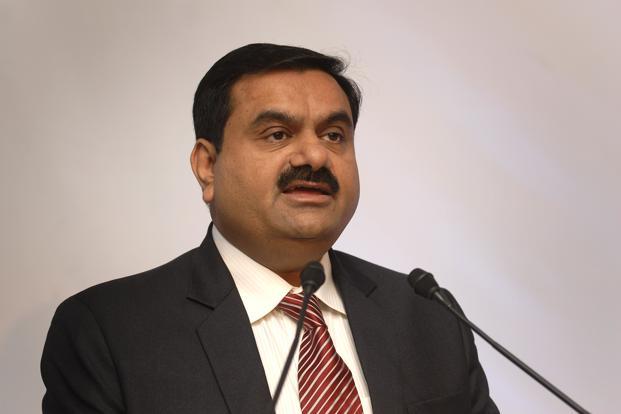
Global rating agency, Moody’s Investors Service on Thursday upgraded India’s growth outlook to positive from stable and retained the sovereign rating at Baa3, observing that the actions of policymakers would strengthen the country's economic growth.
But the outlook upgrade by Moody’s appears half-hearted and a bit distant from translating into a rating upgrade since the potential risks that could act as credit constraints — a weak banking sector and stress on the fiscal front — are serious in nature.
The villain in an otherwise promising India story, as Moody’s has highlighted, is the country’s bad loan-ridden, capital-starved banking sector.
“This poses sovereign credit risks because of the banking sector’s role in financing growth as well the government’s deficit through its purchase of government securities and the contingent liabilities due to government’s ownership of a major portion of banking sector,” the agency said.
Translated, what Moody’s is telling the NDA government is this: India has all the ingredients to become an economic superpower and the world is willing to change its perception on India as a weak economy. There is a stable government at the Centre, willingness to kick start reforms in critical sectors but repairing the damaged banking sector — something that can derail the juggernaut — is essential.
In the absence of any improvement in the banking system metrics over coming months, India’s sovereign credit profile will remain constrained, the agency warns.
Apart from the obvious legacy issues that broke the back of Indian banks mostly during the UPA’s ten-year rule, the Narendra Modi government’s policies are also dealing a blow to the sector now. Until this point, Jaitley has arguably poorly handled the banking sector issues so far, with faulty strategies and weak assumptions.
As Firstpost has noted before, wrong handling of the banking sector reforms can potentially derail an unfolding India growth story since Indian firms are still heavily dependent upon bank funding with the corporate bond market still nascent.
Most of the problems pertaining to the banking sector begins and ends with state-run banks since majority of the private sector banks are largely self sufficient and are focused on low-risk assets, while much of the nation building is still a responsibility of public sector banks.
At a glance, here is where things stand. State-run bans are on the brink of a crisis. Over 90 percent of the bad loans and a good chunk of the restructured loans are on the balance sheets of these entities. The Tier-I capital ratios of at least 12 banks are not seen healthy under the Basel-III norms.
Stressed assets now constitute about 12 percent of the total bank loans given by Indian banks. The higher the sticky assets, the more the chunk of money banks need to set aside in the form of provisions. This, in turn, impacts the profitability and turns them more risk averse. Beginning April, the provisioning burden for banks became even higher with any fresh loan restructuring now demands 15 percent provisioning as against 5 percent before, equal to that of a bad loan.
Most of the NPAs on state-run banks happened in the last 10 years on account of three reasons.
1) Careless lending by state-run banks for years to meet the credit growth targets. Most times, senior bankers manage to reach the corner office at the fag end of their career. During the few years of their stint, the focus mostly is to show maximum growth than focus on quality of assets and get into the good book of the government.
2) Lack of autonomy played its part. Frequent micromanagement by the government in the operations of state-run bank, missives from the north block on the credit decisions and multiple forms of directed lending also significantly contributed to the bad loans in the subsequent years.
Loan waivers destroyed the credit culture. The infamous banker-middlemen-corporate nexus worked in full swing during the UPA regime and lost some prominence only after the 2010 corporate loan scam. Political interference dominated the scene.
3) Prolonged economic slowdown, bureaucratic hurdles and absence of fresh investments added to the woes. Project delays for various reasons resulted in cost overruns for companies and put banks’ money at risk. This resulted in massive loan restructuring, especially in the infrastructure sector, many of which subsequently turned non-performing assets (NPAs).
The capital woes of state-run banks turned worse when the government backtracked from the promise of infusing Rs 11,200 crore in these banks in fiscal year 2015 and chose to infuse only a part of it in select banks based on performance and efficiency in operations.
Many mid-sized, ‘non-performing’ state-run banks were taken aback by this decision. The second shock came in the Budget 2015, when Jaitley announced a capital infusion of Rs 8,000 crore, half of the amount which banks actually require.
Small banks are only left with two options. Either merge with other banks or go to the market to fend for themselves. Given that there is no significant investor appetite in these banks, merger appears to be the only way out, for these banks.
On the other hand, merging a weak, NPA-ridden bank with a strong one or another weak one, has been termed as a bad idea by Indian central bank, since the resultant entity will have to bear the burden.
Jaitely, instead, could have offered the capital assistance to the struggling banks and revamp their operations and let the bigger ones raise money from market.
To be sure, the proposed bank boards bureau and investment holding company to facilitate capital raising for state-run banks is an idea that can work in the long term, but won’t be a solution in the short-run.
State-run banks will require at least Rs 2.4 lakh crore to meet Basel-III norms and significantly larger amount to address the asset quality issues. This is something far beyond the capacity of the state-exchequer.
The solution, as the P J Nayak committee suggested, lies in lowering government stake in these banks below 51 percent and let these entities operate as independent entities and not extended arms of government.
Moody’s is right in highlighting the banking sector constraints as a major risk for the economic growth since only a strong banking sector can fund the India's growth story. Until banks remain fence-sitters, growth is a myth.
SUMIT MAZUMDER IS NEW CII PRESIDENT NAUSHAD FORBES IS CII PRESIDENT DESIGNATE SHOBANA KAMINENI HAS BEEN ELECTED CII VICE PRESIDENT
Our Correspondent : 8 April 2015
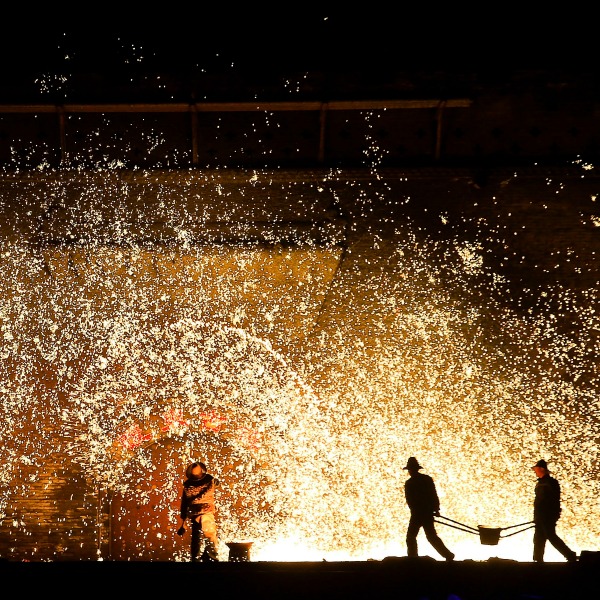 Mr Sumit Mazumder, Chairman & Managing Director, TIL Limited,
Mr Sumit Mazumder, Chairman & Managing Director, TIL Limited, has been elected as the President of CII for the year 2015-16. He succeeds Mr Ajay Shriram as the new President.
TIL is the manufacturer of India’s largest range of material handling equipment in technical collaboration with world leaders – Manitowoc Crane Group, USA; Hyster (a part of NACCO Materials Handling Group, USA); Astec Industries, USA; Paceco Corp, USA (a part of Mitsui Engineering and Shipbuilding, Japan) and Mitsui Miike Machinery Co, Japan (a part of Mitsui Group).
Mr Mazumder is also the Executive Chairman of TIPL (Tractors India Pvt. Ltd.). The Company is a distributor for Caterpillar, USA, in India, Nepal and Bhutan for earthmoving, construction, mining equipment and power systems.
A graduate of St Xavier’s College, Calcutta, Mr Mazumder obtained a Master’s in Business Administration from Sam Houston State University, Texas, USA. He also undertook the Advanced Management Program at Harvard University, Massachusetts, USA.
Dr Naushad Forbes, Director, Forbes Marshall, has become the President-designate of CII for the year 2015-16. Forbes Marshall is India's leading Steam Engineering and Control Instrumentation firm. He chairs the Steam Engineering Companies within the group.
He has been a Lecturer and Consulting Professor at Stanford University in the Program in Science, Technology and Society from 1987 to 2004. He developed courses in Technology and Policy as well the Management of Technology in Firms in Newly Industrialized Countries. He has written widely on innovation in developing countries and higher education in India, including a book, ‘From Followers to Leaders’, co-authored with David Wield. He has received his Bachelors, Masters and PhD Degrees from Stanford University.
Dr Forbes is on the Advisory Council of IIT Bombay; Board of Directors of Godrej Industries, Kirloskar Oil Engines and Jump Associates, California; Governing Council of National Institute of Design and India Design Council; Trustee of Ruby Hall Clinic.
He has held several positions in the Confederation of Indian Industry (CII). He has been the Chairman of the CII National Committee on Higher Education for the past two years, Past Chairman of the National Innovation Council 2012-13 & 2011-12. He is the Past Chairman of the CII Western Region (2009-10); Past Chairman of the CII Maharashtra State Council and CII Pune Zonal Council.
Ms Shobana Kamineni, Executive Vice-Chairperson, Apollo Hospitals Enterprises Limited (AHEL) has been elected as Vice-President of CII for the year 2015-16. Championing Special Initiatives for over 7 years, Ms Kamineni had directed the company’s diversification into several new domains, all of which have been largely responsible for Apollo’s emergence as Asia’s foremost integrated healthcare organization.
Ms Kamineni, continues to help the Apollo Global Projects Consultancy that steers the planning, design and execution of new projects. She also heads Apollo Pharmacy, presently the fastest growing business within AHEL. Apollo Pharmacy is now India’s largest pharmacy chain with a pan-India network of over 2000 stores, 14000 employees and it serves 1,50,000 customers a day.
She holds a B.A. in Economics from Stella Maris College, Chennai and an accelerated Diploma in Hospital Administration from Columbia University, New York.
RBI provides "accommodative" policy; says outlook for growth is improving gradually
Our Correspondent : 7 April 2015

Reserve Bank of India (RBI) has kept repo rate and Cash Reserve Ratio (CRR) unchanged in its first bi-monthly monetary policy of 2015-16.
Explaining its decision to maintain status quo, the Bank said, "Transmission of policy rates to lending rates has not taken place so far despite weak credit off take and the front loading of two rate cuts. With little transmission, and the possibility that incoming data will provide more clarity on the balance of risks on inflation, the Reserve Bank will maintain status quo in its monetary policy stance in this review."
It further said ,"The outlook for growth is improving gradually. Comfortable liquidity conditions should enable banks to transmit the recent reductions in the policy rate into their lending rates, thereby improving financing conditions for the productive sectors of the economy."
Cautioning of the weakening of exports, RBI said, "With the Indian rupee gaining in real effective terms, export margins are coming under pressure for those exporters without substantial imported inputs. Net terms of trade gains and compression in imports of petroleum products have narrowed the trade deficit in the last three months to its lowest level since 2009-10."
Economic activity
RBI said that domestic economic activity is likely to have strengthened in the last quarter of previous fiscal but on the agricultural front it said that the adverse impact of unseasonal rains and hailstorms in March is still unfolding. "Initial estimates indicate that as much as 17 per cent of the sown area under the rabi crop may have been affected though the precise extent of the damage remains to be determined," RBI said in its monetary policy statement.
Commenting on the industrial production front, RBI said that manufacturing appears to be regaining momentum with the growth of production in positive territory for three consecutive months till January. It said, "While basic goods production has been expanding steadily since November 2013, capital goods output has been relatively lumpy and volatile, and more positive readings are needed to be confident about a durable pick-up in investment demand. The persisting contraction in consumer durables production for over two years could be reflecting the underlying weakness in consumption demand as well as higher imports."
The Bank said that services sector is still sending out mixed signals. It said that national accounts statistics suggest consumption demand for services is robust but bank credit and deposit growth remains subdued.
Inflation
RBI noted that retail inflation, or consumer price index (CPI) has been firming up off-late but added that inflation excluding food and fuel fell successively in the nine months till February. "A large part of this disinflation has been on account of the slump in international crude oil prices feeding through into domestic prices of petrol and diesel that are included under the category transport and communication."
Talking about rural wages that imapct rise in inflation, RBI said that the rate of growth of rural wages has come off substantially from the double digit levels that prevailed up to November 2013. "Firms are also reporting a substantial easing of input price pressures, barring the most recent purchasing manager surveys."
RBI policy: Raghuram Rajan unlikely to unveil any goodies for the common man
Our Correspondent : 6 April 2015
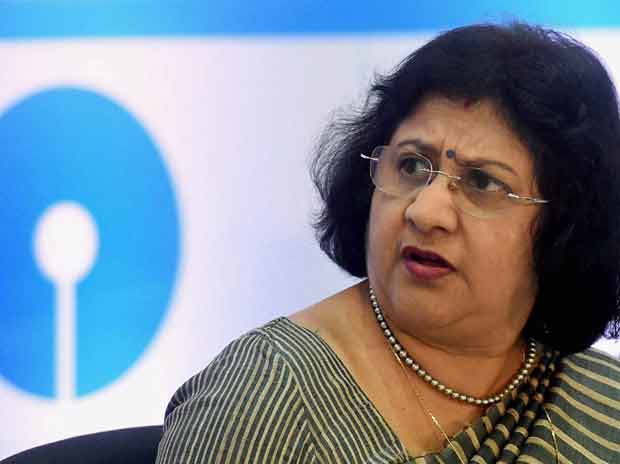
Unlike the previous occasions, this time around, there is a clear absence of consensus among senior economists with respect to what Raghuram Rajan would do when the monetary policy is unveiled on Tuesday.
Some, such as Rajeev Malik of CLSA and D K Joshi of Crisil believe that the central bank will go for the third rate cut of this year, in the face of anemic growth and easing inflation. The other camp, including Sajjid Chinoy of JP Morgan pitch for a status-quo on Tuesday citing uptrend in consumer price inflation in recent months, which could force RBI to put off the rate action to later part of the year. Retail inflation rose to 5.37 per cent in February, from 5.19 per cent in the previous month.
What Rajan would ultimately do is a mystery that often defies the market logic. Time and again, the former International Monetary Fund (IMF) economist has demonstrated his ability to surprise the markets with unexpected moves, including off-policy-date actions.
For the common man on the street, none of this, however, matters until his bank cuts interest rate on his home or auto loans. And, unfortunately, reasons that favour cut in lending rates have been largely absent and outside the control of monetary policy.
The biggest evidence for this is that even a a 50 basis points (bps) cut in key rates by RBI since January, hasn’t, evidently, resulted in the banker to slash loan rates. One bps is one hundredth of a percentage point.
This is when most banks have begun cutting their deposit rates since October, which should have technically followed a cut in lending rates cuts since banks calculate their base rate also considering their deposit rates. But that hasn’t happened yet.
Reason: Factors that prevented banks from lowering their loan rates have remained quite strong. These include piling up of bad and restructured loans, weak earnings growth and poor capital position of state-run banks.
Banks wanted to repair their balance sheets by cutting down bad debt, before further expanding their loan book, by attracting fresh borrowers offering cheaper loan rates.
Secondly, high provisions on bad loans and low demand for loans have put pressure on their earnings and any significant cut in lending rates at this stage would have worsened the situation. Hence, banks aren’t in a hurry to cut lending rates. Till this point, the risk factors outweigh favorable elements for cut in bank lending rates.
To be sure, if RBI cuts repo by a quarter percentage point, some banks would certainly cut lending rates in April but such rate reductions are only likely to be marginal, and hence wouldn’t offer much of a relief to the EMI burden of the borrowers.
In the long-term, however, if the economy recovery gets delayed and corporate loan demand remains subdued, banks will have to lower their loan rates to attract good quality corporations, since they run the risk of losing out big companies to corporate bond market, the signs of which have already begun.
Even if Rajan opts for a 25 bps rate cut in tomorrow's monetary policy, it's not going to make much difference for banks, since this would give only a marginal relief to banks in lowering their cost of funds. Repo rate, at which RBI lends overnight funds to banks, currently stands at 7.50 percent.
Instead, if Rajan opts to cut the cash reserve ratio (CRR) by about half a percentage point, currently at 4 percent, the banking system will get an instant dose of Rs 40,000 crore, which can technically enable a bigger rate cut in lending rates.
In the past, the central bank has candidly admitted that its ability to nudge banks to adhere to the monetary policy signals, or the process of monetary transmission, is weak. In the current scenario, where factors influencing banks to tinker with their lending rates are far beyond the central bank’s control, monetary policy is largely a non-event for the common man. It would be unwise to expect significant cut in bank lending rates in the near future.
Wipro expands Group Executive Council, aims at long-term goals
Our Correspondent : 4 April 2015

IT services major Wipro said it has inducted four new members in its Group Executive Council, a forum of top leaders in the firm that strategises the company's long-term goals.
Former TCS BPO chief Abid Ali Neemuchwala, who joined the company last month as the Group President and Chief Operating Officer (COO), has been inducted into the core group.
Besides Neemuchwala, the other three new incumbents are Chief Executive and President (Energy and Utilities) Anand Padmanabhan, Chief Executive and President (Global Infrastructure Services) G K Prasanna and the Chief Executive and President of Business Application Services Bhanumurthy B M, Wipro said in a statement.
Group Executive Council (GEC) is a forum for the core group of leaders to deliberate and strategises on the long term vision for the corporation, it added.
Apart from Wipro Chairman Azim Premji, the other members of the GEC include Wipro CEO TK Kurien, Pratik Kumar (CEO of Wipro Infrastructure Engineering), Vineet Agrawal (CEO of Wipro Consumer Care and Lighting),
Wipro Chief Sustainability Officer Anurag Behar and Terri Bresenham (MD of Wipro GE Healthcare).
"GEC carries the charter of providing thought leadership across the Wipro Group and is the driving force behind shaping its strategic priorities," Premji said.
These leaders bring with them a rich global experience and the firm is confident that their induction will bring more plurality of ideas and add more heft to the deliberations of the Council, he added.
Ravi Shankar Prasad warns telecom firms on quality of service
Our Correspondent : 3 April 2015
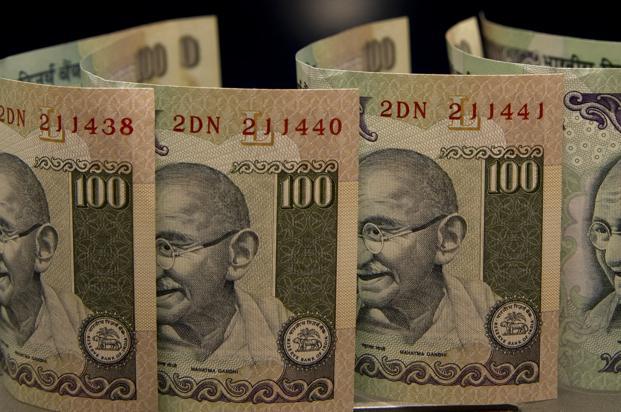
Telecom minister Ravi Shankar Prasad warned telcos on Thursday saying that if they do not address concerns raised by consumers on call drops and quality of service, the matter would be referred to the Telecom Regulatory Authority of India (Trai) for action.
Warning private telecom operators on quality of service, Prasad said, "As a minister, I am equally accountable to consumers. If the consumers of India are complaining, there are lot of call drops in case of private operators, they must take this as caveat consideration." If consumers continue to raise concerns, the matter would be brought to Trai's notice.
Prasad said that he is answerable for the quality of service (QoS) delivered by state-run telecom firms, but at the same time accused the previous United Progressive Alliance government of hurting financial condition of BSNL and MTNL.
"This issue has always baffled me. BSNL was in Rs 10,000-crore profit in 2004 when Mr Atal Bihari Vajpayee left the office," he added.
On apprehensions that call rates would increase due to the revenue outgo of telcos in the spectrum auction, Prasad said that there will be negligible impact of 1.3 paise per minute on call rates. "A very good expert whom I respect shared with me that Indian consumers make mobile calls worth 350 minutes. The spectrum price paid by companies is for 20 years.
If you divide that by 20 years, the yearly impact come to about Rs 5,300 crore on industry whose annual revenue is Rs 2 lakh crore plus."
Prasad said that further dividing Rs 5,300 crore by average minutes of call made by the consumer, the impact comes to around 1.3 paise.
India Value to raise $700m to invest in emerging businesses
Our Correspondent : 2 April 2015
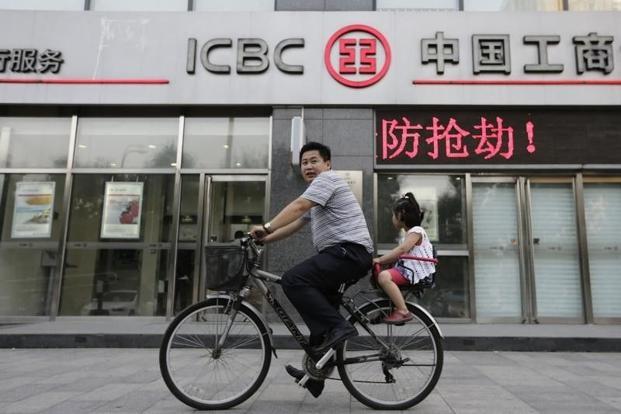
India Value Fund Advisors (IVFA) on Wednesday said it is raising a USD 700 million corpus for its fifth fund to invest in emerging businesses.
IVFA has secured the mandate to advise the 'Indium?V Fund' for which it has already raised USD 500 million from 25 investors, it said in a statement.
The fund raising activities began in November last year and the company is targeting to raise up to USD 700 million in the next three months, it said.
Indium?V is a sector-agnostic fund and has a strategy of partnering with entrepreneurs and management teams to build a portfolio of majority and significant minority investments, it said.
"We are thankful for the confidence reposed in us by Fund-V and its investors," IVFA Managing Partner Vishal Nevatia said. IVFA has over USD 1.8 billion in assets under management and invested in over 30 businesses in the country over the last 15 years.
It currently has investments in 15 companies with total revenues of over USD 1 billion and profits of over USD 200 million.
Petrol price cut by 49 paise, diesel by Rs 1.21
Our Correspondent : 1 April 2015
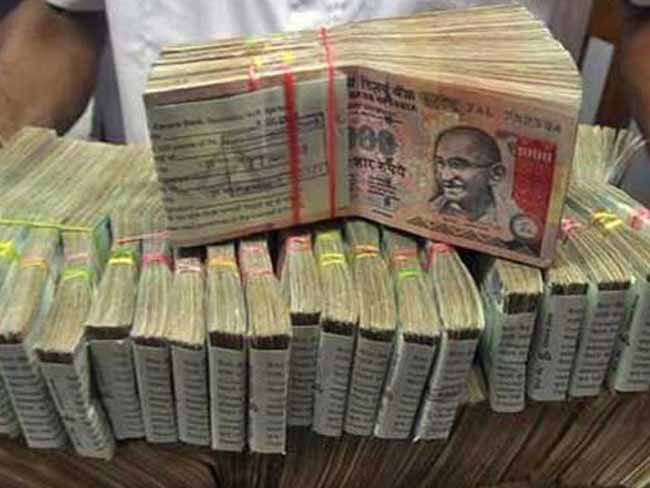
Petrol prices cut by 49 paise per litre, diesel by Rs 1.21 a litre – the rates are effective midnight.
In the last round petrol price (28, Feb., 2015) was hiked by Rs 3.18 per litre and diesel by Rs 3.09, which was the second increase in rates in the month on rising international oil rates.
A litre of petrol in Delhi then cost Rs 60.49 as against Rs 57.31 currently while diesel cost rose to Rs 49.71 per litre as against Rs 46.62.
Prior to the increases in February, petrol price had been cut on ten occasions since August 2014 and diesel six times since October 2014.
Cumulatively, petrol price had been cut by Rs 17.11 per litre in ten reductions since August and diesel by Rs 12.96 a litre since its deregulation in October.
This trend was reversed when rates were raised on February 16.
Fuel prices would have been lower but for four consecutive excise duty hikes since November totalling Rs 7.75 a litre on petrol and Rs 7.50 on diesel.
Income Tax Department Publishes Names of Big Tax Defaulters
Our Correspondent : 31 March 2015
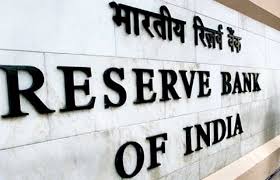
New Delhi: The Income Tax department on Tuesday took to the strategy of 'naming and shaming' of some large tax defaulters, as it published names of 18 entities who owe over Rs 500 crore tax to the exchequer.
"The step is aimed to publicise and put these names in public domain so that the common man can come forward to help the department in knowing the whereabouts of these. The step is to enhance public awareness against these entities who are acting against law. These names were earlier were put up the department's website earlier," a senior I-T officer said.
Newspapers on Tuesday carried the names of the tax defaulters and the data published was quoted to have been published by the Principal Chief Commissioner of Income Tax (Administration) based in the national capital.
Adopting an aggressive approach, government had for the first time gone public with names of 18 tax defaulters, including Goldsukh Trade and Somani Cements which, according to I-T, have turned wilful defaulters.
In a bid to force them these entities paying their dues, the Central Board of Direct Taxes (CBDT) had asked the I-T department to post on its website, few days back, the names of 18 defaulters, of whom 11 are based in Gujarat.
"Defaulters are advised to pay tax arrears immediately," said the notice.
"This is the first time the department has put in public domain a list of those wilful tax defaulters who have a tax liability of Rs 10 crore and above," a senior tax official had said, adding that in many cases the assessees were not "traceable".
"The department, in the public notice, has provided the PAN number and the last known address of these defaulters for the public to know," the official added.
The official said periodically the department has been proposing "naming and shaming" of wilful defaulters and the step has now been taken on the last day of the current financial year today.
The companies in the list include Somani Cement with tax arrears of Rs 27.47 crore, Blue Information Technology (Rs 75.11 cr), Appletech Solutions (Rs 27.07 cr), Jupiter Business (Rs 21.31 cr) and Hirak Biotech (Rs 18.54 cr).
The other Gujarat-based companies which figured in the defaulters list include Icon Bio Pharma & Healthcare Ltd (Rs 17.69 cr), Banyan & Berry Alloys (Rs 17.48 cr), Laxminarayan T Thakkar (Rs 12.49 cr), Virag Dyeing & Printing (Rs 18.57 cr), Poonam Industries (Rs 15.84 cr), Kunvar Ajay Food Pvt Ltd (Rs 15 cr).
Besides, names of Jaipur-based Goldsukh Trade India (Rs 75.47 cr), Kolkata-based Victor Credit & Construction (Rs 13.81 cr), Mumbai-based Noble Merchandise (Rs 11.93 cr) are also there in the list.
The list also includes the legal heir of Pune-based G K Dharne involving a tax default of Rs 38.31 crore.
Oil prices drop on weak demand, potential Iran deal
Our Correspondent : 30 March 2015
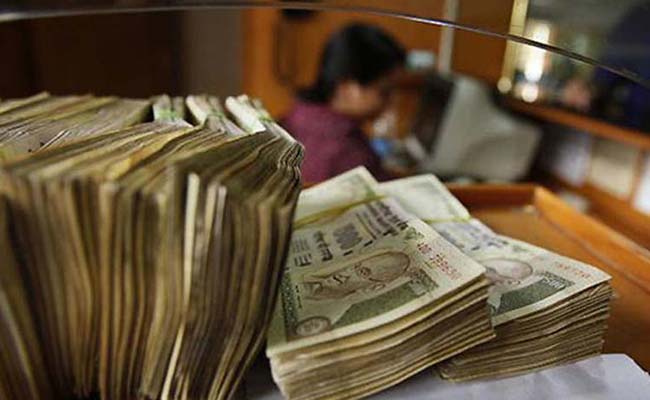
Oil prices fell on Monday as the market focused on whether Iran and six world powers would reach a deal that could add fuel to an already oversupplied market if sanctions against Tehran are lifted.
The two sides tried to break an impasse in nuclear negotiations on Sunday ahead of a deadline to find a preliminary agreement by Tuesday, exploring compromises in a number of areas.
"Any relaxation of Iran oil sanctions could see increased exports adding to swelling global supplies and further pressuring prices," ANZ said on Monday.
Benchmark Brent crude futures had dropped to $56.10 by 0600 GMT, down 31 cents as the market began to price in the possibility of a deal with Iran. Front-month U.S. West Texas Intermediate (WTI) futures were down 72 cents at $48.15 a barrel.
Brokerage Phillip Futures said that it expected oil prices to fall to $50-53 for Brent and $46-48 for U.S. crude in the second quarter.
Analysts said that weak demand and a strong dollar were also weighing on prices.
"Demand growth in the OECD has been in structural decline over the past five years ... (and) continued dollar strength is a headwind to the oil price recovery," Barclays said, adding that it saw the dollar rising slightly above parity with the euro by the fourth quarter of this year, up from $1.087 for each euro currently.
A potential climb in prices could come from an OPEC production cut, which some members have lobbied for but its biggest exporter Saudi Arabia has resisted.
"Saudi Arabia had to cut its price in Asia to ensure its crude oil remained attractive," energy consultancy Wood Mackenzie said.
"Other suppliers looking to position themselves in Asia will have to pay close attention to the Saudi's pricing strategy," it added. This would also include Iran should sanctions be eased.
Morgan Stanley said that crude demand outlook would also be dented via the refinery sector, where production tends to fall towards the middle of the year.
In the United States, the oil rig count continued to fall although analysts said that lower drilling activity would only affect oil production later this year.
"The current rig count is pointing to U.S. production declining slightly sequentially in 2Q15 and 3Q15," Goldman Sachs said although it added that activity could bounce back in 2016 as drillers had raised equity and benefitted from falling production costs.
RBI moves to restrict bank exposure to corporate loans
Our Correspondent : 28 March 2015
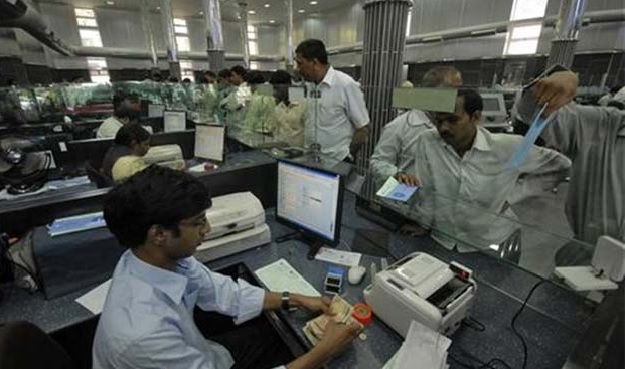
The Reserve Bank of India (RBI) has proposed to lower the ceiling on how much a bank can lend to a single corporate group, in a move to curb risks in the banking sector at a time when bad loans are on the rise.
Under the proposal, banks would only be allowed to lend up to 25 percent of their core capital, down from the earlier ceiling of up to 55 percent, starting Jan. 1, 2019.
The central bank also said late on Friday it would consider setting a minimum percentage of capital requirements that companies must raise from corporate bond and commercial paper markets, saying the corporate sector had become too dependent on banks for their financial needs.
The RBI requested feedback on its proposals by April 30.
The central bank regularly issues discussion papers on proposals, which are not final measures.
The RBI had said earlier that it planned to review the lending cap to companies to gradually align it with a 25 percent ceiling set by global standard-setter Basel Committee on Banking Supervision.
Analysts have said in the past that this was more of a prudential measure, as banks typically do not breach current caps.
Sensex Falls Over 200 Points, Nifty Below 8,300; Oil & Gas Stocks Drag
Our Correspondent : 27 March 2015
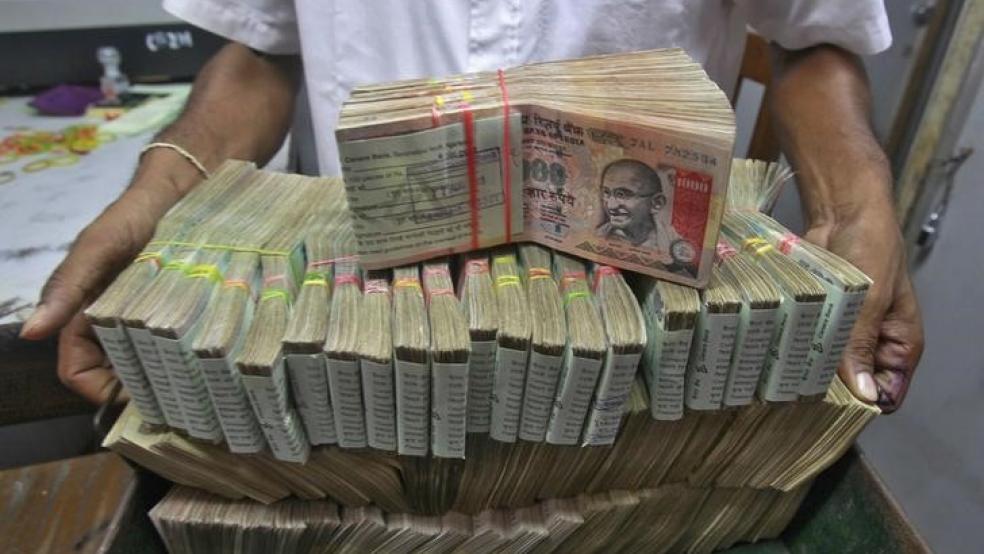
The BSE benchmark Sensex edged lower in the noon deals on the back of broad-based selling pressure.
The 50-share Nifty slipped below its important psychological level of 8,300 led by selling in blue-chip stocks like Bharti Airtel, Reliance Industries, ITC and HDFC.
Meanwhile, selling pressure was visible across the board barring IT stocks.
Oil & gas stocks were amongst the worst hit in trades in the noon deals and were seen dragging the benchmark indices.
Frontline oil & gas stocks like Reliance Industries Cairn India, Petronet LNG, Oil India and ONGC were trading with a negative bias after news reports surfaced that the government has reduced the price of natural gas from $5.61 to $5.02. The move is likely to impact revenues of the gas producing companies like Reliance Industries and GAIL India.
FMCG, healthcare, Banking, auto, realty and metal stocks were also facing the heat of selling pressure.
From the Nifty-50 basket of stocks, 38 were declining while 12 were advancing.
Telecom players were trading lower with Idea Cellular the debutant on the Nifty being the top loser. The stock slipped over 7 per cent to Rs 169 on concerns over payment outgo towards spectrum purchase which will increase its debt burden in near term denting its profitability. Bharti Airtel also fell 4.4 per cent to Rs 382.
Punjab National Bank, Asian Paints, BHEL, Bank of Baroda, Axis Bank, ACC, Dr Reddy's Labs, ITC, Yes bank, Sun Pharma, HUL, HDFC, Tata Steel, Wipro, Tech Mahindra and Lupin were also among the losers, down over 1 per cent each.
At 12:50 p.m., the Sensex was down 184 points at 27,273 and the 50-share Nifty slipped 62 points to 8,280.
Spectrum Payment to Push Up Telecom Firms' Debt to Rs 3.5 Lakh Crore: Assocham
Our Correspondent : 26 March 2015

New Delhi: Payment for telecom spectrum won by companies in the auction concluded on Wednesday is expected to push up the debt on telecom operators to about Rs 3.5 lakh crore, leading to a significant rise in tariffs, says industry body Assocham.
"Telecom industry which was already saddled with nearly Rs 2.5 lakh crores is now going to helplessly see it mount to nearly Rs 3.5 lakh crores," Assocham Telecom Council chairman T V Ramachandran said in a statement.
The spectrum was sold at about 68 per cent premium (at Rs 1,09,874.91 crore). At the base price fixed by the government, its value was Rs 65,463.40 crore. About 11 per cent of the spectrum remained unsold which also included 800 Mhz, 1800 Mhz and 2100 Mhz (3G) band.
Idea Cellular, Airtel, Vodafone and Reliance Communications participated in the auction mainly to defend their existing spectrum holding as their licences are set to expire. Reliance Jio, Tata Teleservices, Telewings (Uninor) and Aircel participated to buy additional spectrum.
Mr Ramachandran said that "consumer tariffs are bound to rise significantly but, due to the level of hyper-competition present here, the increase would not be anywhere near adequate to cover the higher cost".
He said that the cash outgo may restrict roll out of networks and affect the basic objectivity of sector to provide telecom connectivity to people.
As per the rules, new telecom operator will have to roll out networks in five phases and existing telecom operator in additional three phases over period of five years to provide coverage of up to 30 per cent at block headquarter level in addition to covering district headquarters.
"The 'aam aadmi', desperately seeking increased connectivity for his personal productivity and quality of life enhancements, would probably remain underserved longer," Mr Ramachandran said.
There are provisions of penalty in case companies miss the deadline to rollout their networks.
"While this is no doubt beneficial for addressing the fiscal deficit, the outcome does raise some important concerns not only for the industry but also, more importantly the consumer - the 'aam aadmi', and for the national economy," Mr Ramachandran added.
|

